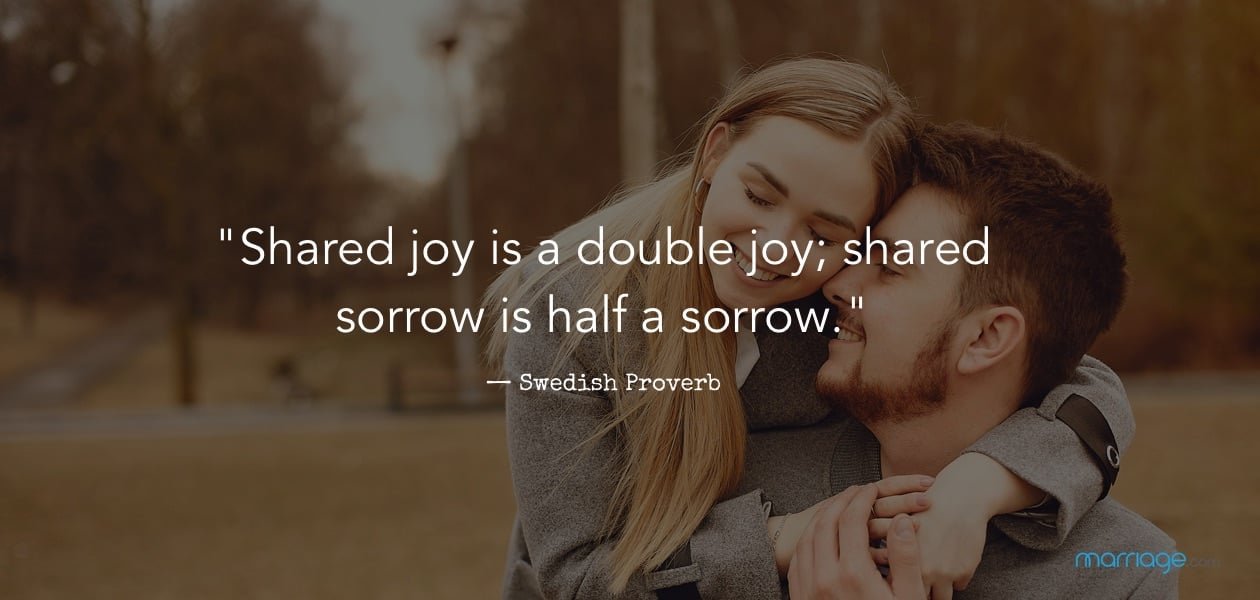Introduction
In the tapestry of human existence, emotions form the vibrant threads that weave together the fabric of our lives. Among these, joy and sorrow are integral components, shaping our experiences and forging connections with others. The age-old adage,
“Shared joy is a double joy; shared sorrow is halved,” encapsulates the profound truth that the act of sharing amplifies joy and alleviates sorrow. In this article, we delve into the depth of this wisdom, exploring its cultural roots, psychological underpinnings, and practical implications in fostering meaningful relationships.
The Cultural Tapestry of Shared Emotions
Historical Origins
The roots of the saying can be traced back to various cultures and philosophical traditions. In Chinese culture, a proverb states, “Happiness shared is doubled; sorrow shared is halved.” This sentiment resonates across different societies, reflecting a universal understanding of the impact of shared emotions on the human experience.
Philosophical Perspectives
Philosophers, from ancient times to the present, have contemplated the significance of shared emotions. Aristotle, in his exploration of friendship, highlighted the importance of sharing joys and sorrows as a means of deepening human connections. This idea transcends cultural and temporal boundaries, affirming its timeless relevance.
Psychological Insights
Neurobiological Basis
Recent studies in neuroscience support the notion that sharing emotions enhances our overall well-being. When we share positive experiences, such as joy, the brain releases neurotransmitters like dopamine, reinforcing feelings of happiness. Conversely, sharing sorrows activates empathy circuits, promoting emotional support and buffering the impact of negative emotions.

Social Bonds and Mental Health
The act of sharing both joy and sorrow fosters a sense of belonging and strengthens social bonds. In times of celebration, shared joy creates a collective sense of achievement, promoting unity. Conversely, sharing sorrows cultivates empathy, reducing feelings of isolation and facilitating emotional resilience.
Practical Applications in Relationships
Strengthening Connections
Whether in familial, romantic, or platonic relationships, the practice of sharing emotions deepens the bond between individuals. Celebrating successes together creates lasting memories, while navigating challenges collectively reinforces the resilience of the relationship.
Communication and Understanding
Effective communication is at the heart of shared emotions. Expressing joy allows for mutual celebration, while sharing sorrows opens avenues for empathy and support. Transparent communication builds trust, laying the foundation for enduring relationships.
FAQ
Q1: Is it always appropriate to share emotions with others?
A1: While discretion is important, sharing appropriate emotions in the right context strengthens relationships. It fosters understanding and mutual support.
Q2: How can one navigate cultural differences in expressing emotions?
A2: Sensitivity to cultural norms is crucial. Understanding the cultural context and respecting individual preferences guide the appropriate expression of shared emotions.
Q3: Can shared joy and sorrow extend beyond personal relationships?
A3: Absolutely. The workplace, communities, and even global events demonstrate the profound impact of shared emotions on collective experiences.
Q4: How does the saying apply to the digital age and social media?
A4: The digital age amplifies the reach of shared emotions. Social media platforms provide a virtual space for collective joy and shared support during difficult times.
Conclusion
In embracing the wisdom that “Shared joy is a double joy; shared sorrow is halved,” we recognize the transformative power of shared emotions. It is a timeless truth that transcends cultural, philosophical, and scientific realms. As we navigate the intricate tapestry of human connections, let us cherish the moments of shared joy and find solace in the shared embrace during times of sorrow. In doing so, we unlock the full richness of the human experience.




